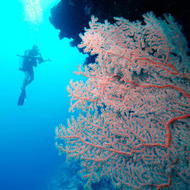Guide 10: Monitoring success with sustainable tourism
What this guide will tell you:
This guide will tell you why benchmarking matters and suggest some ideas on how you can develop site and destination specific benchmarks.
Steps to success:
- Why this matters
-
There are a number of reasons why monitoring is important for World Heritage sites:
- To ensure that the OUV (Outstanding Universal Value) of a site is being maintained
- To assess the condition and/or state of conservation
- To allow outstanding issues to be recognised and dealt with
- To allow good practice, knowledge, and experiences to be shared between states, site managers, and other heritage professionals.
However – as Guide 1 (Understanding tourism at your destination) and Guide 2 (Developing a strategy for progressive change) stressed – it also very important to ensure that, at a destination scale, the product and experiences being offered to visitors are of the right quality and nature, as well as securing the return they deserve. There should also be benchmarks of key issues and the monitoring of their impacts on the host community.
Another key reason monitoring is crucial is to capture the effectiveness of different measures in a way funders and investors can see evidence their investment has made a difference, and to provide you with important information to persuade future investors that ‘$X amount of investment can deliver Y number of outcomes’.
Lastly, the credibility and buy-in for sustainability depends to an extent on the outcomes being transparent, accountable, and evidence-based. If you want the wider destination to support sustainability, then you need to build the evidence base for it, and encourage people to question and challenge your approaches.
-
 When you undertake your initial analysis and develop your strategy, you need to identify sensible benchmarks and milestones
When you undertake your initial analysis and develop your strategy, you need to identify sensible benchmarks and milestones -
Below are some of the important benchmarks you should consider:
1) Conservation or environmental benchmarks
The primary benchmarks should be about protecting the World Heritage site's OUV. While many stakeholder aspirations will be economic, the key responsibility and obligation for managers of World Heritage sites and the State Parties is to protect and preserve the values of the site. Nothing should compromise this. There is no simple blueprint for what these benchmarks should be, each site will have a unique cultural or natural set of attributes and these must be captured in a site-specific set of benchmarks. For example, a natural site may want to manage the risk of invasive species or the threat of poaching, whereas a cultural site may wish to prevent damage to monuments from traffic. The evidence used to analyse benchmarks should be replicated at every site to provide a comparison at different moments in time – are things getting better, staying the same, or getting worse?
2) Community benchmarks
The second set of benchmarks should be about monitoring the positive and negative impacts on the host community. A key element of sustainability is providing host communities with a powerful voice in how tourism affects them. Often the impacts – both good and bad – on local people are accepted as a kind of collateral damage created by tourism, something inevitable and unavoidable. However, this certainly should not be the case. Sustainable tourism must monitor these impacts and take them very seriously. There is no perfect way to do this, and different societies and cultures will have different preferences or models for achieving it. However, the key principle is the host community is part of the process of understanding tourism, (Guide 1, Understanding tourism at your destination), formulating strategy (Guide 2, Developing a strategy for progressive change), and setting the benchmarks to evaluate whether or not the destination is providing them with what they need and aspirations they have outlined.
Some destinations might monitor:
- The average wage in the tourism sector paid to local people
- The poverty rate in the local community
- The quality of life of the host community
- The percentage of young people finishing school
- The percentage of local young people who receive training in the tourism industry
- Even the number of local people who run a business.
Other benchmarks might be about when the destination feels too crowded or when quality of life deteriorates because of congestion – such measures are subjective, but can be measured if people are encouraged to keep simple records or diaries. The number of potential benchmarks is endless, but you can work with the community to determine the ones that matter to them.
3) Economic/Tourism benchmarks
The previous two sets of benchmarks were about protecting places and protecting communities, but it is, of course, necessary to benchmark a number of key tourism variables. These will differ from site to site, but as we saw in Guide 1 (Understanding tourism at your destination), it is crucial to understand the specific tourism trends for the destination in a way site and destination managers are aware of how many people are visiting, when they are coming, why they are coming, how much they are spending, and in what ways. There is a need for benchmarks that shed light on both the demand and supply side of the tourism sector.
Unfortunately, many sites do not monitor visitor expectations and perceptions about the quality of what they experience – this is crucial. In this guide, we stress that many more sites need to develop simple surveying techniques to provide insights for monitoring this over time. All significant tourism destinations should also be monitoring the economic value of tourism to the local area, as this is a key benchmark and crucial to understanding and communicating its significance.
4) Other benchmarks
The strategic focus of different sites will inform which benchmarks should be monitored over time. Be confident in making the benchmarks fit-for-purpose for your site and its context. Do not worry if your benchmarks are unique to your site – they should be. If the key local issue is visitor management, then most benchmarks may be about that issue. Similarly, if the issue is an unsustainable funding situation, then the benchmarks might be about costs relative to income. Your issue might also be ecological degradation, so the benchmarks might be about the quality of the environment. All of these are site-specific, and all must be based on understanding the issues and challenges of the site as set out in Guide 1 and 2.
-
 Benchmarks should be SMART
Benchmarks should be SMART -
Specific. Be extremely clear about what you mean; vague or generic benchmarks do not work – target a specific area for improvement.
Measurable. Benchmarks must be based on data that can be repeated to provide comparisons – this requires quantifiable measures.
Assignable. Things only happen if someone is tasked with doing them, specify in your strategy who will make this thing happen.
Realistic. State what can realistically be achieved in the given time period, considering available resources.
Time-related. Specify when the action will be undertaken, and when its outcome can be achieved.
-
 Benchmarks and results should be published and signed by the key stakeholders as transparent measures of success or failure
Benchmarks and results should be published and signed by the key stakeholders as transparent measures of success or failure -
Benchmarks should be relatively simple to understand and should be widely communicated. We recommend no more than 10 benchmarks, which should be published as the final page of the strategy (See Guide 2, Developing a strategy for progressive change). Tourism businesses can struggle to understand heritage professionals at times, so having a simple set of benchmarks that can be explained easily to everyone is important.
-
 Revisit benchmarks annually and check they are still relevant
Revisit benchmarks annually and check they are still relevant -
You cannot opt out of benchmarks to make life easier, but you can develop them with good reason. If the global economy grows, or declines, faster than anyone could have predicted, the projects and issues in your strategy may change, and your benchmarks may need to adjust to reflect those changes. Simply opting out of tough targets is cheating. However, you can evolve benchmarks in a transparent and accountable way – just be sure to explain to stakeholders what you have changed and why. We would suggest that every year, or every other year, might be a suitable moment to review benchmarks and add new ones if needed.
Set timescales for monitoring. Tourism numbers and impacts will change quite rapidly, and will need to be reviewed at least every year. Other benchmarks, such as ecological conditions linked to long-term deterioration, might change very slowly and do not require annual review.
Be honest about your assumptions in terms of what is likely to happen. To avoid post-facto rationalization, you should try and record your assumptions based on how certain actions might affect benchmarks when you are first identifying them. Capturing this is useful to help you understand change in the destination.
Do not be fazed by monitoring – it can be simple. Sometimes monitoring might be photographic, or simply holding a forum to record what local people think is improving and what is not. Some benchmarks might be simply measured by simple surveys of visitors, or through observation by experts.
-
 Who does the monitoring?
Who does the monitoring? -
Guide 1 (Understanding Tourism) outlined that data on the conservation status of the site; the needs, aspirations, and quality of life of the host community; and the performance of the tourism sector, will be held by a range of stakeholders. Therefore, benchmark evidence will have to be monitored in the same way – by working together with a range of partners and providing the evidence through which benchmark performance can be assessed. When setting the strategy and agreeing on responsibilities for actions/activities (Guide 2, Developing a strategy for progressive change), you should ensure that stakeholders commit to their part of gathering data and periodically reporting progress against the agreed benchmarks.
-
 Assess what is working and what is not; if you need to do things differently, then refresh your strategy
Assess what is working and what is not; if you need to do things differently, then refresh your strategy -
The whole point of a strategy and benchmarks is to provide a measure of what is and what is not working. It is crucial that you commit to reviewing progress and analysing the evidence at appropriate intervals. Ask yourself truthfully whether or not the actions/activities implemented are having the desired impact on the issues. If they are, congratulate yourself on the success, refocus on the remaining issues, or identify new ones. If your benchmarks are revealing a decline in circumstances, then you need to be honest and reassess what is needed.
It may be that you change your strategy in the light of what you learn from your successes and failures. Some of the most progressive World Heritage sites are those that have made lots of mistakes and quickly learned how to do things better. No one has all the answers to your site-specific problems, so there will be a degree of trial and error to your solutions. Do not worry about failure, it means you are trying to make a difference. By monitoring and benchmarking, you can quickly assess and learn from your failures to succeed next time.
-
 Saving the world is not easy; it is not a race with an end point
Saving the world is not easy; it is not a race with an end point -
Celebrate and publicize your successes. When you do great things and solve strategic issues, be sure to tell everyone in the destination and beyond about it. Asking people, communities, and businesses to work with you over a period of time requires faith in you and your actions/activities. If you forget to tell people when you achieve something, it will go unnoticed, and their faith in you will be weaker as a result.
Go back to the start, and look again at tourism in your destination and World Heritage site. Look at what the issues are, what the pressures are, and how you are performing compared to other World Heritage destinations. Things change fast in tourism (not the least of which are visitors’ expectations of quality and storytelling), and new technologies mean that nothing stands still. Start the strategic process again – make your destination the most sustainable and most effective place it can possible be. Also, If you have cracked all the issues, please tell us about it… few sites have!


